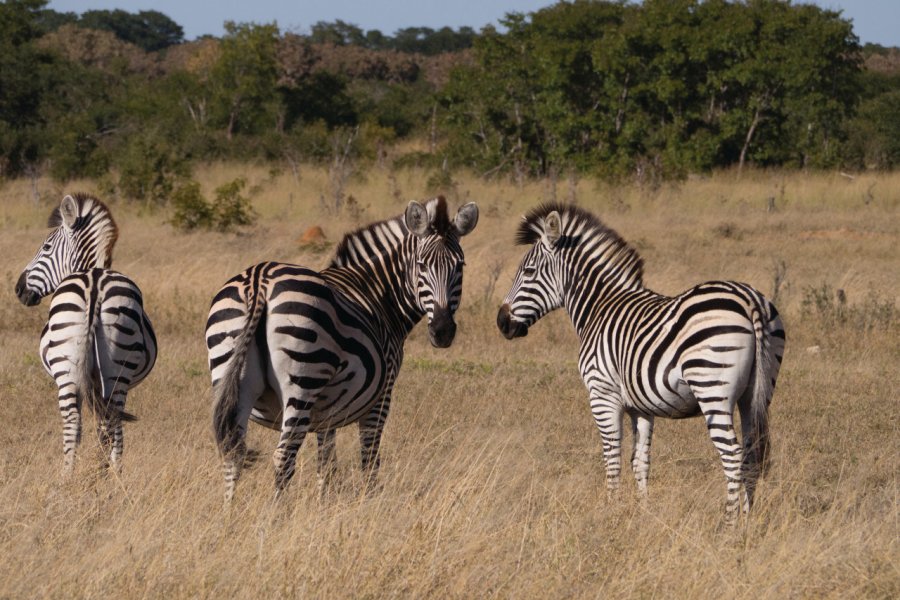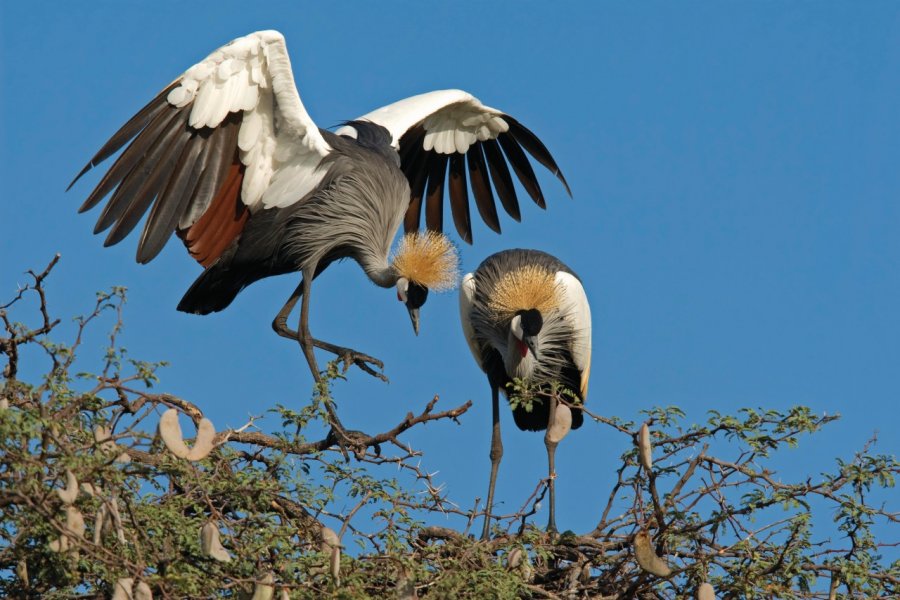Travel Guide Hwange National Park
Find an accommodation
Advertising
Western Zimbabwe is home to the largest protected area in the country. Covering an area of 14,620 km² (half the size of Belgium), it is named after a Rozwi chief, Hwange Rusumbani, who lived north of the current park before being driven out by the Zulu warrior Mzilikazi. Considered one of the most diverse and densely populated protected areas in the world, Hwange National Park is crisscrossed by 500 km of roads and trails, offering an exclusive approach to African wildlife.The vast territory currently occupied by Hwange National Park was originally inhabited by the San, a nomadic tribe that lived by hunting and gathering and knew how to adapt to the most difficult living environments. Only able to evolve and survive in a hostile environment, the San were the sole occupants of the area for several centuries. The other ethnic groups considered this area to be far too deserted. Apart from a few Nambya groups who settled to the north of the present park, they preferred to settle elsewhere. In the early nineteenth century, the situation changed somewhat. Under powerful and determined chiefs, the Ndebele invaded the area and, enchanted by its vast wilderness, turned parts of it into a royal hunting reserve. At the time, wildlife, which had long preferred the green banks of the Zambezi to these arid inlands, was forced to retreat to this area because of increasing human pressure. This was a vicious circle for the mammals, which were almost decimated by the intensive hunting expeditions led by the Ndebele kings and then by the white settlers. In order to stop this massacre and because this part of the country had proved to be unsuitable for agriculture, half of the far west was turned into a reserve in 1929. The first warden appointed was Ted Davison; a fierce defender of wildlife, he decided to set up sixty artificial watering holes in order to attract and sedentarize large herds and to allow the existing mammals to survive the dry seasons. This campaign (supported by the effective management of the protected areas) was a success: in 1950, Hwange was proclaimed a national park and from the 1970s onwards, it was considered one of the most densely populated wildlife areas in Africa. After independence, unfortunately, budgets for wilderness preservation declined, resulting in the drying up of many artificial water bodies. The problems encountered during the 1980s have been partially resolved. The park is better managed and efforts are made annually to keep the water pumps running. The Hwange National Park has a particularly rich fauna, lions, zebras, giraffes, buffalos... It is also known to have one of the largest concentrations of elephants in the world: more than 20,000! No less than 107 varieties of mammals have been recorded in the park, among which are the nine protected species of Zimbabwe: pangolin, wild dog, protel, white rhino, black rhino, brown hyena, cheetah, roan antelope and oryx. In the category of feathered animals, the reserve also distinguishes itself by its richness since we count on average 500 different species of birds, among which several varieties of rollers, hornbills and birds of prey, as well as specimens as curious as the bustard, the secretary or the red and black gonolek. As far as the flora is concerned, the same diversity can be noted, the biotope being completely different from one end of the protected area to the other. The northern zone is characterized by teak forests, mopane woods, bushes, rolling hills and rocky outcrops. On the other hand, the central and southern parts are characterized by landscapes similar to those of the nearby Kalahari: vast expanses of savannah, endless plains, small depressions surrounded by shrubs, palms and fossilized dunes... These flat and open immensities are ideal for wildlife observation, but are unfortunately located in a part of the park that is still not developed. Only the northern part of the park has a network of trails and many comfortable accommodations.As three large camps share this organized and frequented area, it is customary to divide Hwange Park into four major sectors, each offering a different approach to the bush: Main Camp (central-eastern), Sinamatella (north-eastern), Robins Camp (north-western), Wilderness Area (the southern half of the park forbidden to the public, other than the guests of private lodges ). The southern half of the park is much less developed than the northern half: the trails are few and very sandy, picnic sites are rare and public camps are non-existent. However, it is in this magnificently preserved area that the park displays its most beautiful landscapes: once past the traditional teak and mopane forests, nature unfolds in endless plains. There, in these barely explored territories, the notions of space and peace take on their full meaning, and the African bush finally dares to show itself in its wildest and purest form. The mammals, unaccustomed to man and vehicles, are more fearful than in the northern part of the park and more difficult to photograph; but they stand out in large herds on the immense plains and seem to be there for you alone... Few tourists dare to venture into the south-east of the park, yet the tracks are quite practicable in 4 x 4. This section of the park (at least, the tiny accessible part) will suit all the adventurers who have set up their own expedition and are able to live in self-sufficiency (food, water, gasoline, sleeping...) during their stay.
What to visit Hwange National Park?
Advertising
Suggested addresses Hwange National Park
Weather at the moment
Advertising
Organize your trip with our partners Hwange National Park
Transportation
Book your plane tickets
Car Rental
Boat rental
Accommodation & stays
Find a hotel
Holiday rental
Find your campsite
Tailor-made trip
Immersion travel
Services / On site
Activities & visits
Find a doctor










